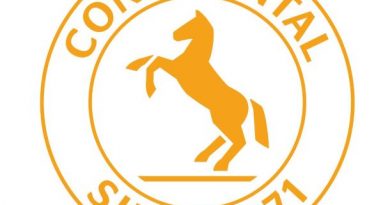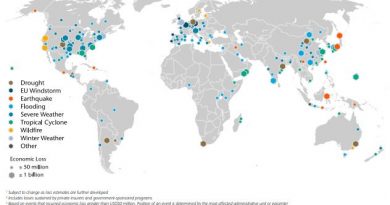Managing risk through reputation management
In this Q&A, Avashnee Moodley, Head of Branding & PR, OPPO SA tells us about the risks associated with managing a brand’s reputation and how to best mitigate them.
Tell us about yourself, the institution you work for and your designation?
I am an internal and communication specialist, with experience that spans across working for Public Relations agencies, in newsrooms as a senior reporter / journalist and in corporate environments looking after brand communication and marketing.
It is a space that I have always been passionate about, and an exciting one that sits at the cusp of global changes, particularly in corporate roles, where I have looked after and have been responsible for building and nurturing technology brands.
I am currently Head of Brand and Communication at OPPO, a global pioneer in technology innovation and smartphone devices. My role is to create a presence for the brand locally, as well as grow the reputation and credibility of the brand as a new entrant, in a heavily saturated market.
The OPPO brand launched in South Africa in Q4 of 2020, amid the Covid-19 pandemic. Our commitment to the South African consumer is to provide cutting-edge devices and services, that empower users in an intelligently connected future.
Is reputational risk really a bigger deal today than it was five to ten years ago?
A resounding yes! A simplistic explanation of reputation, is that – it is the mechanism of promising trustworthy behaviour. A break in this trust can often be a make or break in stakeholder or shareholder value for any organisation that takes its reputation seriously.
The business environment has become hyper-connected, primarily due to the explosion of social media platforms. This has brought with it some volatility to brand management.
Ten years ago we viewed risks through two key aspects i.e. likelihood and impact. Hyperconnectivity has added a new aspect i.e. velocity – the reality that reputational risks can escalate quite rapidly and wide or create uncontrollable events that can have an adverse impact on a company’s reputation, thereby affecting its revenue.
In today’s world, reputation management is a business prerequisite, as the impact of reputational risks can be far reaching.
 How much control do brands really have over reputational risk?
How much control do brands really have over reputational risk?
We are undoubtedly in the era of the customer. Communication is no longer one way, consumers are publishers, hence the volatility of reputational risk management.
This however does not mean that brands do not have control over reputational risks – this is particularly true for companies that do not see reputation management as a function of brand managers.
A good reputation is perceived to offer more value, which can result in sustained business growth – this equates brand equity. Unfortunately brand equity can be eroded if true measures of reputational risk are not in place.
Recent examples have shown that most companies place effort in handling threats to reputation, only once the risks have realised. At this stage, we are talking about crisis communications, a reactive way of managing the damage created by risks, and not so much risk management.
Companies that have better control of their reputation and the risks associated to it, are those that proactively plan and create possible risk scenarios thought-out the entire business value chain, and plan for possible eventualities, with a focus on how the brand will work itself through either of those scenarios with all its stakeholders including customers, staff, investors, shareholders, communities etc.
Who typically “owns” reputational risk?
Reputational risk is an executive task, ideally the executive committee of a company should each have reputational risk management as a KPI, due to the fact that reputational risks can emerge from disparate areas of business, and not one person can have complete oversight of potential risks.
There however needs to be one point of accountability, and typically this falls into the responsibility of the head of communications or PR. What is critical is for the Communications or PR head, to have broad powers, and must have access and the full respect of the CEO, as well as a collaborative relationship with the head of risk and compliance, to enable them to be able to identify the risks, and make sound recommendations for fixes that may need to be implemented in departments where PR does not have oversight, and or authority. More importantly, to allow PR to plan for communication in crisissituations, should they arise. Reputation management is a proactive business strategy.
What’s the most common blind spot when it comes to addressing reputational risk today?
The impact of social matters is often downplayed in addressing reputational risk today. Over the last few years we have seen a number of movements such as #MeToo, #PRIDE, #BlackLivesMatter. Although it could be very easy to not see these as business critical, reality is that equality, gender and diversity are gaining voice and momentum globally. ‘It can never happen to us’ is not a way to address this reputational risk, as with as little as a hashtag, a brand can find itself in the middle of a reputational storm that may have damaging effects.
Although there are many, this blind spot is one that we could say, it is important to not overlook.
Anything else you want to add?
Reputational risk today requires that all companies see themselves as global companies. As a multinational, we at OPPO are aware that any reputational risks that may occur in any of our global locations may spill over into the local market. In our planning, we consider global issues, as much as we consider local ones.
While this is a prerequisite for multinationals, it is fast becoming how businesses of any size should plan, as the internet is a huge influence, and it is not limited to geographies.




